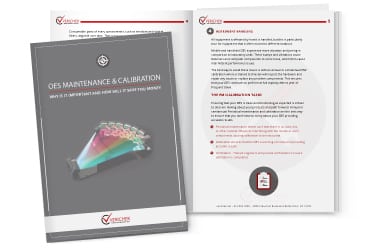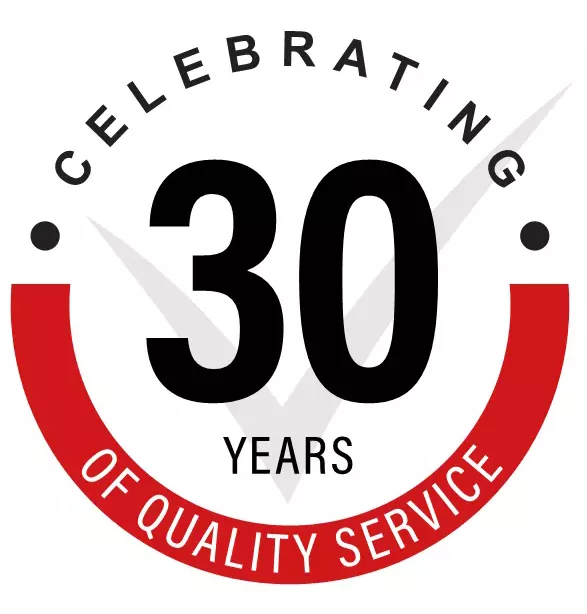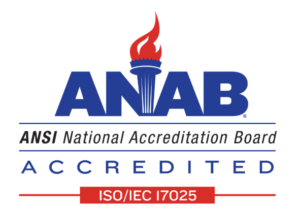While maintenance does not guarantee that you won’t need to occasionally troubleshoot issues, it can provide you with a more accurate and reliable analysis the vast majority of the time.
Beyond being a regular part of maintenance, calibration is a necessary part of any scientific process. All scientific processes and procedures need to have a known starting point, and this is absolutely essential for all machines.
General Overview – Why Calibration Is Necessary
 One of the first things you do when you use a calculator is to clear the previous calculation, right.
One of the first things you do when you use a calculator is to clear the previous calculation, right.
If you start typing numbers in without clearing the calculator, you risk including a number that you did not intend to from the last calculation. Obviously, this gives you the wrong calculation.
This is comparable to what calibration does. Just as you clear the number on a calculator, calibrating a spectrometer ensures that the spectrometer is set to zero. Potential issues and errors are also corrected during the calibration.
Calibration should be conducted at least once a year, regardless of how often the spectrometer is used. Results can be affected by long-term lack of use as well as things like dust being knocked about can adversely affect results.
Ensuring an accurate calibration is essential to getting reliable and accurate results. Calibration will vary based on the spectrometer, but the steps are relatively universal.
While calibration typically refers to setting the machine prior to use, but there are more detailed types of calibration that should be done as part of the regular maintenance.

OES Maintenance & Calibration:
Why is it important and how will it save you money
Calibration
![]() There are a number of services that are included as part of calibration including a number of cleaning services that are part of regular maintenance, which is why maintenance helps ensure that calibrations provide optimal functionality. However, cleaning is not the same as calibration. The following are some of the primary means of calibrating a spectrometer.
There are a number of services that are included as part of calibration including a number of cleaning services that are part of regular maintenance, which is why maintenance helps ensure that calibrations provide optimal functionality. However, cleaning is not the same as calibration. The following are some of the primary means of calibrating a spectrometer.
Light Intensity Test
The intensity of the light is essential to getting an accurate analysis. If the light intensity is affected, the readings can be very inconsistent. This means you will run the analysis more times than is necessary, and you will still have results that are not reliable.
Regularly checking the light intensity is not exactly part of calibration, but it is essential for ensuring that the calibration is also correct so that you have a good starting point.
Conventional Calibration Lamps
This is among one of the most common calibration methods. A conventional calibration lamp provides the necessary illumination of the spectrometer and measures its positions. This includes things like pixel indices.
The calibration process of a conventional calibration lamp provides a set of lines that are evenly distributed for the range you would like to calibrate. It can then compare results against these set lines to ensure that the results are aligned.
The Process
 Basic calibration can be conducted by any trained operator and should be a part of the regular analysis process. While steps may vary based on the model of the spectrometer, the process follows a few universal steps.
Basic calibration can be conducted by any trained operator and should be a part of the regular analysis process. While steps may vary based on the model of the spectrometer, the process follows a few universal steps.
- The spectrometer is turned on and allowed to warm up.
- It is then set to the wavelength to be calibrated.
- A blank is prepared by filling the cuvette with the solution to the halfway point.
- The operator cleans the cuvette so that oils and other outside influences are not introduced into the calibration.
- Load the blank into the spectrometer.
- Conduct the process using the blank.
- Evaluate the results.
- Adjust the spectrometer to rectify issues found from the blank.
- Repeat the steps as necessary.
End Results
 Calibration is used to both ensure that the results are accurate and to determine if there are issues with the spectrometer.
Calibration is used to both ensure that the results are accurate and to determine if there are issues with the spectrometer.
For example, if you find that your machine frequently is considerably off when you calibrate the spectrometer, it could mean there is something else wrong with the machine.
Issues like dirty windows can affect calibration, and ultimately make results less reliable. If test results seem to vary too much for the same sample, calibrating may be necessary to verify that the results are correct. Typically, results that are too dissimilar are a sign of other problems, but calibration can help you verify that the instrument is properly zeroed prior to re-testing the sample.
Calibrating your spectrometer is a relatively simple task, but it has significant effects on the results. Ensuring that your tool is properly set prior to use will give you more accurate and reliable results. It can also make it easier to tell when there is possibly a part that needs to be repaired.
While the primary purpose of calibrating is to ensure that each test has the most accurate result possible, it can also be a sign of something more seriously wrong with the spectrometer. Make sure that the results are not too varied because that could be an indication that there is something very seriously wrong with the spectrometer.

OES Maintenance & Calibration:
Why is it important and how will it save you money



 OES MAINTENANCE & CALIBRATION:
OES MAINTENANCE & CALIBRATION: